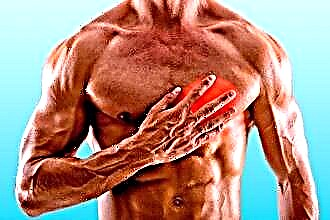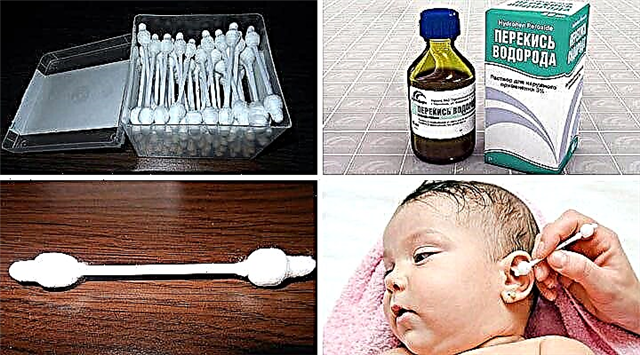Cardiological pathology in the XXI century is the leader among the causes of death. Early identification and treatment of patients with relevant problems helps to reduce the number of deaths and disabilities. Chest discomfort is a basic symptom that requires patient attention. If the pain in the heart radiates to the left hand, then it is imperative to call an ambulance to hospitalize the person. In this article I will tell you about all the nuances that you need to know about this situation.
How dangerous is heart pain
Pain is a natural reaction of the body, designed to warn it about the development of a certain pathology. The absence of an appropriate mechanism for a person would become fatal, since we would not feel anything and could die from domestic injuries. But what does pain in the region of the heart mean? A similar symptom alarms every person and is a cause for concern. And for good reason. According to statistics, diseases of the cardiovascular system are confidently leading in the overall mortality rate of the population of the entire planet.
Therefore, it is very important to differentiate in time the cause of chest pain in order to choose an adequate method of treatment. Ignoring the symptom is contraindicated due to the risk of developing irreversible changes in the myocardium, which can lead to death.
Possible consequences of cardiac diseases accompanied by pain in the heart:
- necrosis (death) of individual cells or entire areas of the myocardium;
- progression of heart failure;
- the formation of heart aneurysms, which are saccular protrusions of one of its walls;
- stagnation of blood in the lungs with the addition of symptoms such as cough, shortness of breath, deterioration in general health, etc.;
- violation of the rhythm of the heart.
However, don't panic prematurely. Heart pain is not always a sign of myocardial infarction. There are a number of other pathologies that can have a similar clinical picture, but with a more favorable prognosis.
Etiology
Pain or discomfort in the chest area is a reason to see a doctor. This is especially true for patients at high risk of developing a heart attack or other forms of coronary heart disease (IHD).
Factors contributing to the occurrence of the corresponding symptom:
- atherosclerotic coronary artery disease;
- overweight (you can calculate your body mass index here);
- smoking;
- chronic inflammatory processes in the body (tonsillitis, sinusitis, etc.);
- diseases of the peripheral nervous system.
These factors are the mechanisms that trigger the pathogenetic mechanism of pain development. Depending on the individual characteristics of each organism, a different intensity of the symptom is observed.
Mechanisms of chest pain:
- ischemia - a discrepancy between the need for oxygen for the operation of the main "pump" in the human body and the volume of its intake;
- inflammatory process of bacterial, viral or fungal origin;
- traumatic injury;
- neurological problems.
Depending on the mechanism of origin of the unpleasant symptom, its nature and the complaints that the patient addresses will differ. The doctor needs to quickly understand the situation in order to confirm or exclude life-threatening diagnoses with the choice of the optimal method of treating a person.
For example, if a patient comes to me for an appointment and complains that his heart pain is radiating to his left arm, I consider him primarily as a potential candidate for myocardial infarction. First, I need to exclude this diagnosis, and only then can further differentiation be carried out in a more relaxed mode.
Common diseases
The most dangerous and common cause provoking pain in the chest area with migration to the arm is myocardial infarction. Pathology is a form of coronary heart disease and takes millions of lives worldwide every year.
Characteristic signs of heart attack pain that everyone should remember:
- pronounced intensity (in 80% of cases);
- pressing or burning sensations. Patients sometimes say that they have "stepped on the chest" by an elephant;
- duration more than 30 minutes;
- numbness or irradiation (spread) in the left arm, scapula corresponding to the half of the neck or jaw.
Patients with similar clinical symptoms are always urgently referred for specific diagnostics (ECG, blood test for troponin I, Echo-KG, coronary angiography) to verify the heart attack and conduct appropriate treatment.
In addition to a heart attack, chest pain is often the result of the following conditions:
- Stable, variant and unstable angina. The principle of the development of symptoms is the same as in a heart attack, but without myocardial necrosis.
- Pericarditis. Due to inflammation of the outer shell of the heart against the background of a bacterial, viral or fungal infection, specific receptors are irritated, which leads to the appearance of a symptom.
- Chest sciatica. In this case, the pain in the heart is localized in a small area and has a stabbing character. Numbness of the hands and fingers remains noteworthy, which develops due to compression of the nerve endings that exit from the holes in the corresponding part of the spine.
- Myocarditis. The pain is less severe. Numbness of the hands in this case is much less common.
- Vegetovascular dystonia (VVD) (for more details on this condition, see the video below). Patients with this diagnosis almost always complain of heart pain. The symptom may be accompanied by migration to the arm, but the severity of clinical symptoms is inferior to ischemic heart disease.
Timely diagnosis of the cause of acute pain will improve the prognosis for the patient and prevent the development of complications such as heart failure, fatal arrhythmias and myocardial ruptures.
Expert advice
Chest discomfort is a symptom that cannot be ignored. If the heart hurts and the left side of the neck, arm, shoulder blade becomes numb, then an ambulance should be called immediately.
Before the doctors arrive, I always recommend the following simple steps to my patients:
- Relaxation. You need to take a recumbent position and try to calm down.
- Fresh air access. Open windows and remove crushing clothing.
- Reception of "Nitroglycerin". Dose - 1 tablet under the tongue.
In 50-60% of cases, such an algorithm of actions will improve a person's well-being and conduct a primary diagnosis of myocardial infarction. With the progression of necrosis of the heart muscle, the pain and numbness of the left arm while taking nitroglycerin will not disappear.
Rare diseases
The diseases described above remain the most common causes of acute chest pain with numbness in the arm. However, in my practice, there were patients who, with similar (almost) symptoms, did not suffer from coronary artery disease or VSD.
Rare cardiological pathologies:
- Broken Heart Syndrome (Takotsubo). Pathology is accompanied by a sharp decrease in myocardial function against a background of stress. The clinic resembles a heart attack, but fatal complications do not develop.
- Mechanical damage. In this case, there is a clear causal relationship between chest trauma and its symptoms.
- Oncological pathology. Heart tumors are rare. However, with the growth of neoplasms into the pericardium, a corresponding clinical picture may occur.
Clinical case
A 45-year-old man, an entrepreneur, was admitted to our clinic. The patient complained of pressing chest pain radiating to the left side of the neck and arm.The symptom arose suddenly after an argument with a customer.
From the patient's words, he first decided to endure the discomfort, but after 2 hours of growing pain he called an ambulance. The team's doctors recorded an ECG showing an abnormal Q wave and ST segment elevation. A man came to us with a preliminary diagnosis of acute coronary syndrome.
On an emergency basis, we sent the patient to the catheterization laboratory for angiography. After revealing a total blockage of the anterior interventricular branch of the left coronary artery, a stent was installed at the occlusion site in the patient with further prescription of drug therapy (beta-blockers, antiplatelet agents, nitrates, statics) in adequate doses. On the second day, the man's condition improved.



